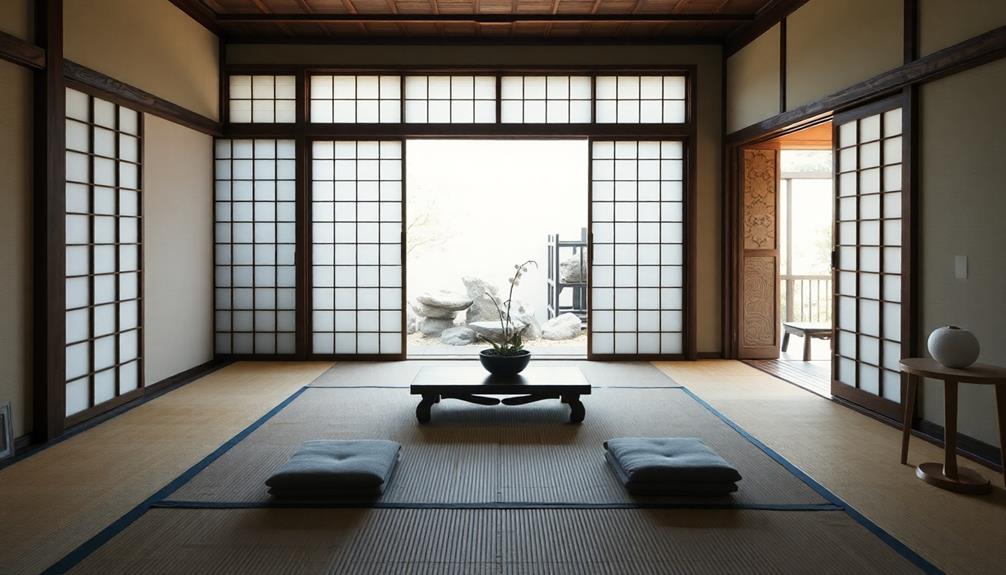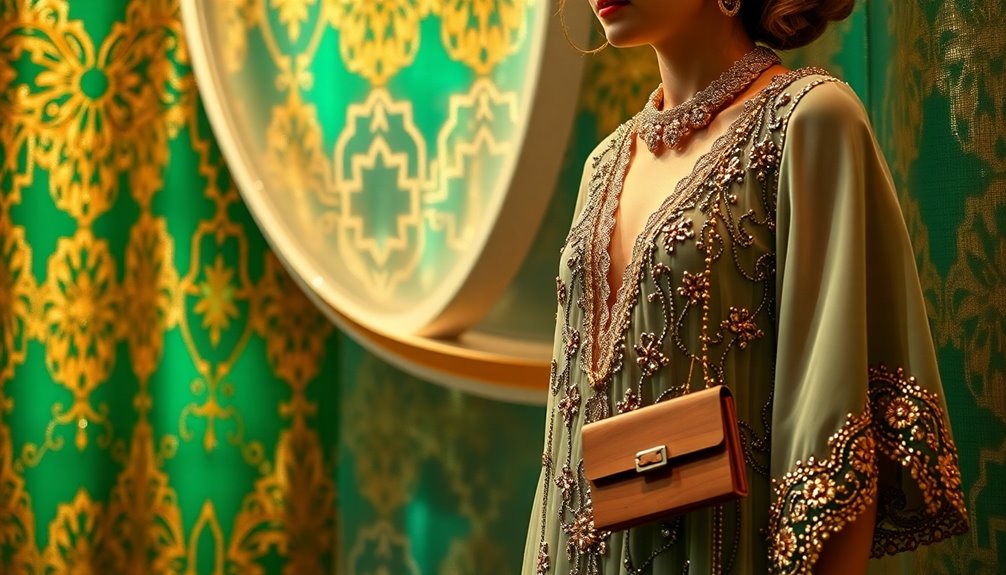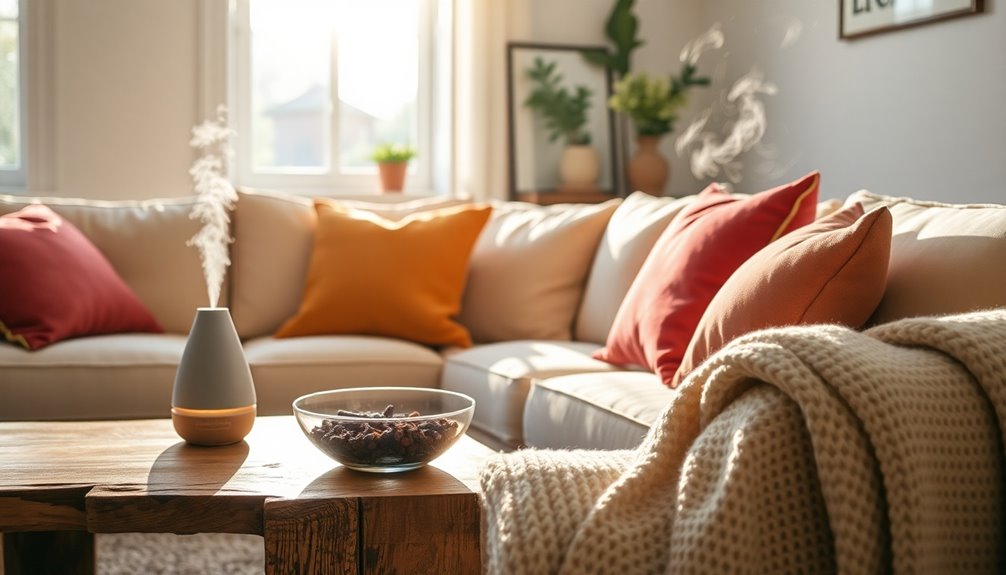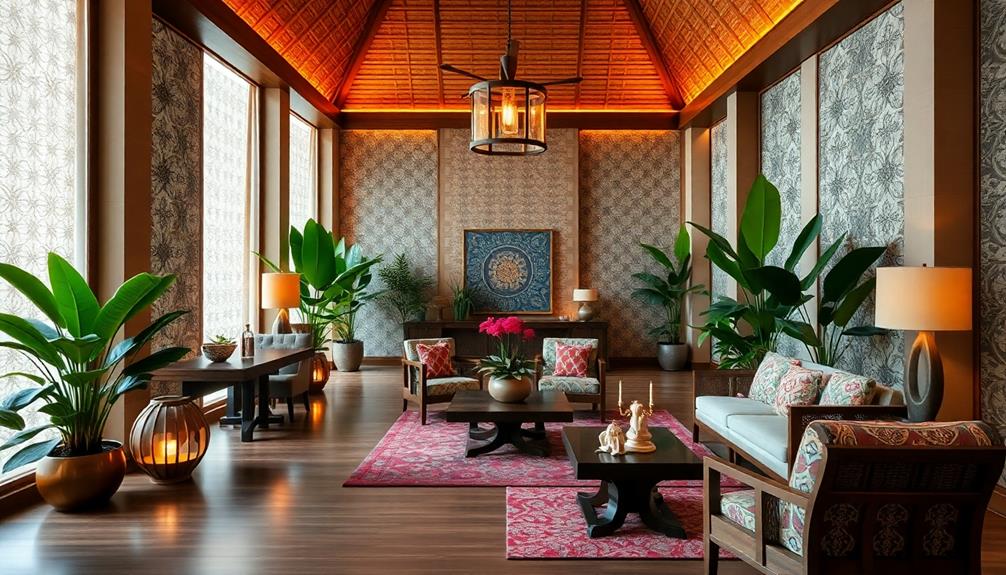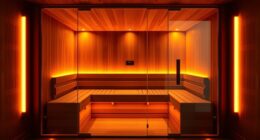Japanese design emphasizes simplicity through a deep connection to nature and mindfulness principles. You'll find elements like natural materials, neutral palettes, and the concept of Ma, which promotes tranquility by reducing clutter. Wabi-Sabi celebrates imperfection, allowing you to appreciate the beauty in the natural world. This design philosophy not only fosters a serene environment but also encourages sustainable living. By embracing minimalism, you create spaces that enhance clarity and creativity. If you explore further, you'll discover how these principles can transform your living spaces into harmonious sanctuaries, enriching your home and life.
Key Takeaways
- Japanese design embodies simplicity through Zen principles, emphasizing mindfulness and a deep connection to nature and surroundings.
- The concept of Ma (negative space) fosters tranquility by minimizing clutter and enhancing the aesthetic experience.
- Wabi-Sabi celebrates imperfection, encouraging appreciation for natural elements and the beauty found in life's transience.
- Traditional materials like wood, bamboo, and stone integrate indoor spaces with nature, promoting sustainability and harmony.
- Minimalist design enhances creativity and focus, creating serene environments that support mental clarity and emotional well-being.
Cultural Foundations of Simplicity
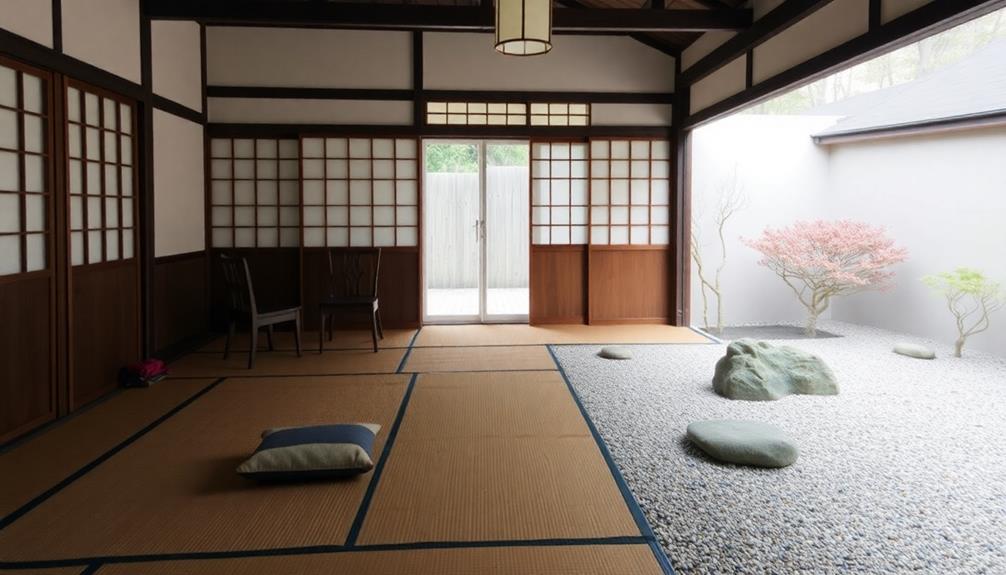
Embracing the essence of simplicity, Japanese design draws heavily from its cultural roots, particularly Zen Buddhism. This philosophy promotes mindfulness and a deep connection to one's surroundings.
You'll notice that concepts like Ma, or negative space, are essential, as they encourage tranquility by eliminating clutter. Wabi-Sabi, which celebrates imperfection, enhances the beauty of simplicity, allowing you to appreciate the natural world in its raw state.
When you incorporate traditional elements like Shoji screens and Tatami mats, you create an atmosphere of elegance and balance. The focus on natural materials reinforces a harmonious living environment, guiding you toward a more mindful existence.
Elements of Nature in Design
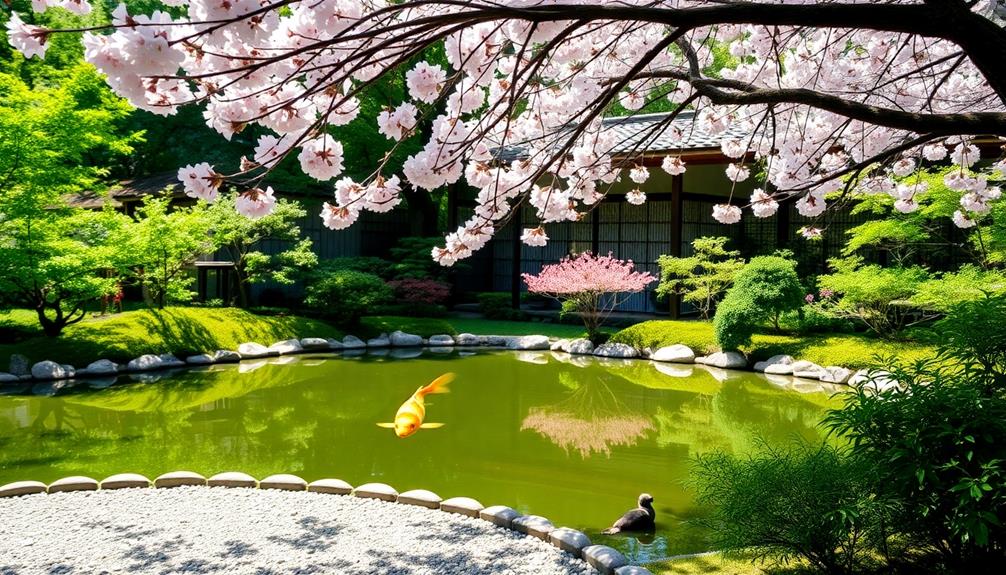
Nature plays an essential role in Japanese design, with elements like wood, bamboo, and stone creating a seamless connection between indoor spaces and the natural world.
You'll notice how tatami mats and shoji screens not only enhance aesthetics but also promote sustainability. The neutral color palettes echo serene hues found in nature, grounding your space in tranquility.
Incorporating indoor plants, like bonsai trees or rock gardens, further enriches the ambiance, inviting a sense of calm. This design philosophy encourages decluttering, allowing for mental clarity and a peaceful environment.
Global Impact of Minimalism
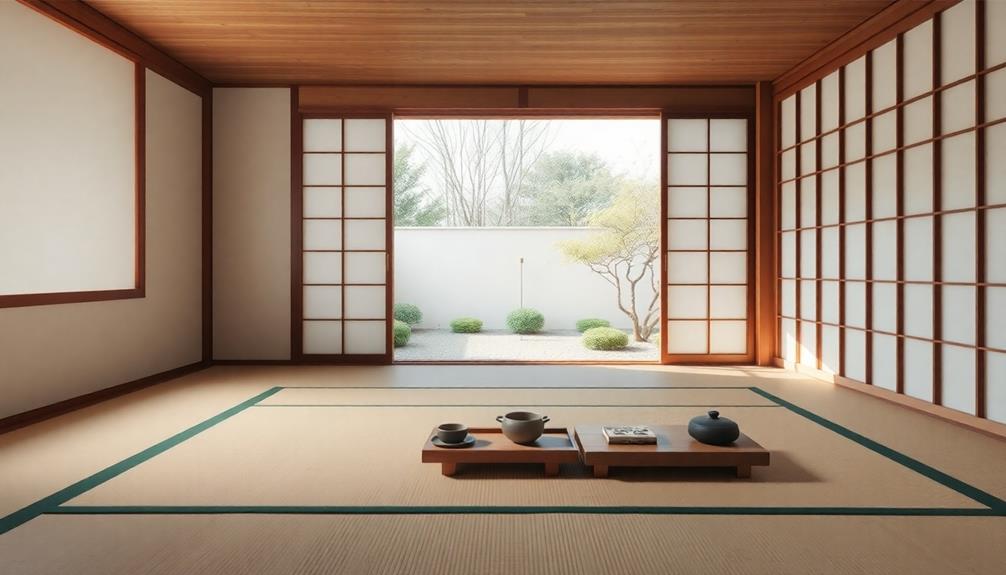
The global impact of minimalism resonates deeply with those seeking simplicity and tranquility in their lives. You might find yourself drawn to this lifestyle, as it promotes clarity and focus in an increasingly chaotic world.
Minimalism isn't just about decluttering; it embodies a philosophy that transcends borders. Consider these key influences:
- Mindfulness: Embracing minimalism encourages you to appreciate the present moment, fostering a deeper connection with yourself and your surroundings.
- Sustainable Living: By prioritizing quality over quantity, you contribute to environmental conservation and make more thoughtful purchasing decisions.
- Enhanced Creativity: A simplified space allows your mind to breathe, sparking creativity and innovation in your personal and professional life.
Ultimately, minimalism offers a path to a more fulfilling existence.
Comparing Maximalism and Minimalism
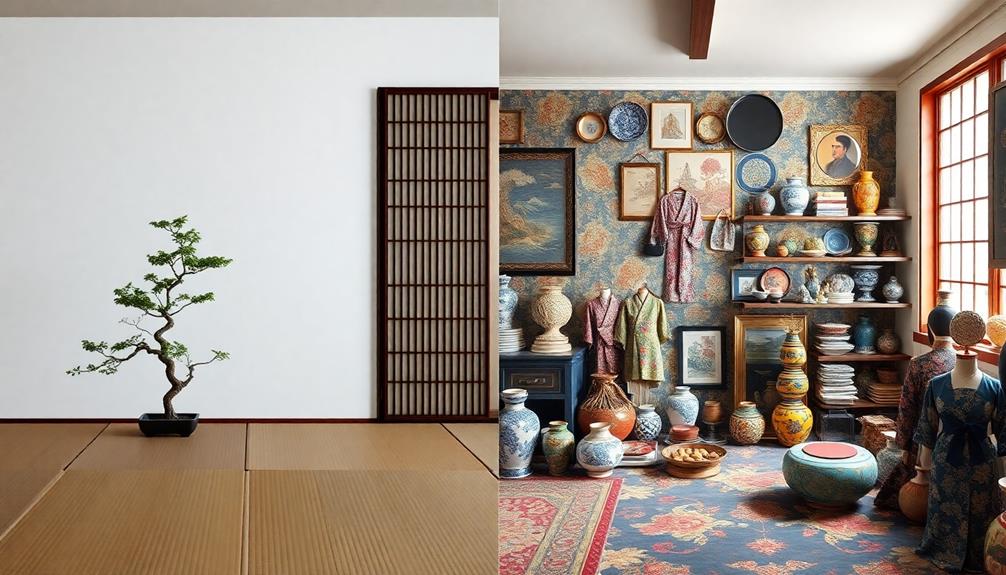
Contrast defines the ongoing debate between maximalism and minimalism in design.
You'll find that maximalism thrives on bold colors, intricate patterns, and a mix of textures, creating a vibrant and eclectic atmosphere. It's about celebrating abundance and visual richness, inviting you to explore layers of detail.
On the other hand, minimalism embraces simplicity, focusing on clean lines, negative space, and muted palettes to cultivate tranquility. It promotes a sense of peace and clarity, making spaces feel open and serene.
While maximalism can energize a room, minimalism encourages mindfulness and connection to nature.
Ultimately, the choice between these philosophies reflects your personal style and desired emotional response from your space.
Which approach resonates more with you?
Wabi-Sabi and Imperfection
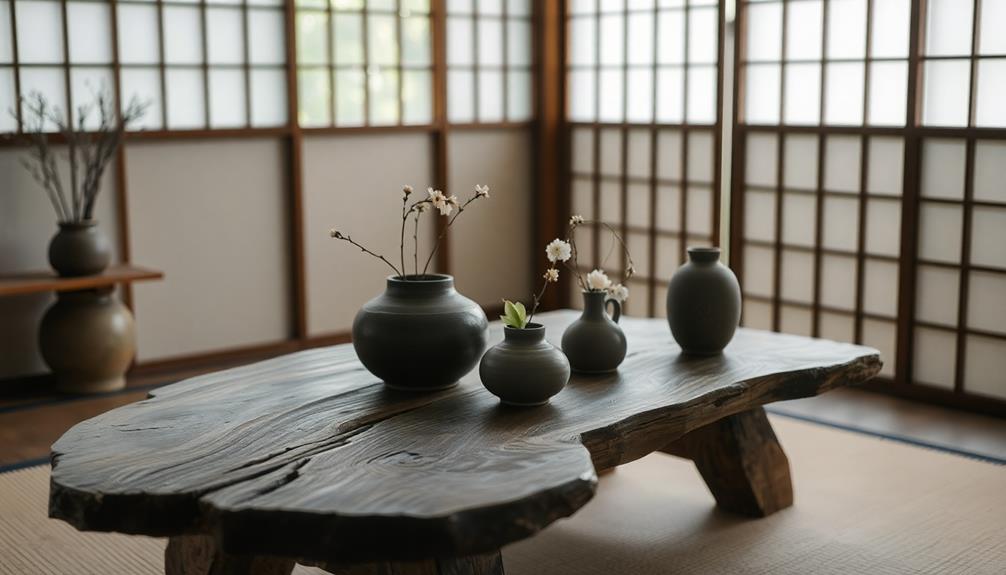
Embracing wabi-sabi invites you to find beauty in imperfection and transience, celebrating the unique stories that objects and spaces tell.
This philosophy encourages you to appreciate the natural cycle of life, where flaws and wear reveal character.
By incorporating wabi-sabi into your design, you can cultivate a more meaningful environment.
Here are three key aspects to reflect upon:
- Embrace Flaws: Look for beauty in chipped pottery or weathered wood, understanding they enhance the authenticity of your space.
- Value Simplicity: Choose minimalist decor that highlights natural elements, allowing imperfections to shine.
- Celebrate Change: Recognize that beauty evolves. Embrace the idea that nothing lasts forever, making each moment and item precious.
Sustainable Practices in Design
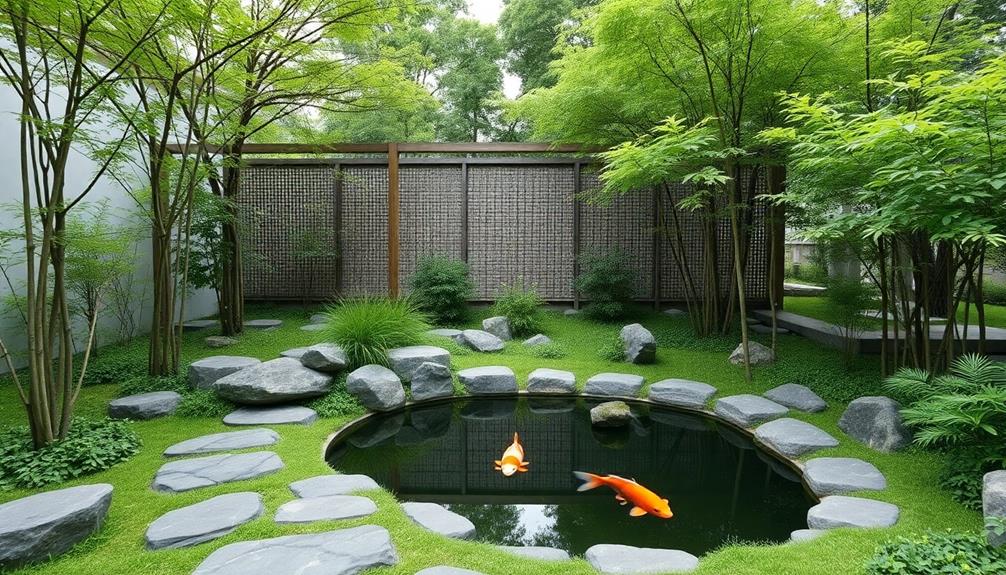
How can you create a design that not only looks beautiful but also respects the environment? Start by choosing sustainable materials like bamboo, reclaimed wood, or recycled metals. These elements not only contribute to a stunning aesthetic but also minimize your ecological footprint.
For instance, consider incorporating self-watering planters that enhance indoor greenery while reducing maintenance. Incorporate natural light through large windows or skylights, reducing the need for artificial lighting.
You can also emphasize indoor greenery by adding plants, which purify the air and enhance your space. Opt for multifunctional furniture to maximize space and reduce waste.
Future of Smart Living Spaces
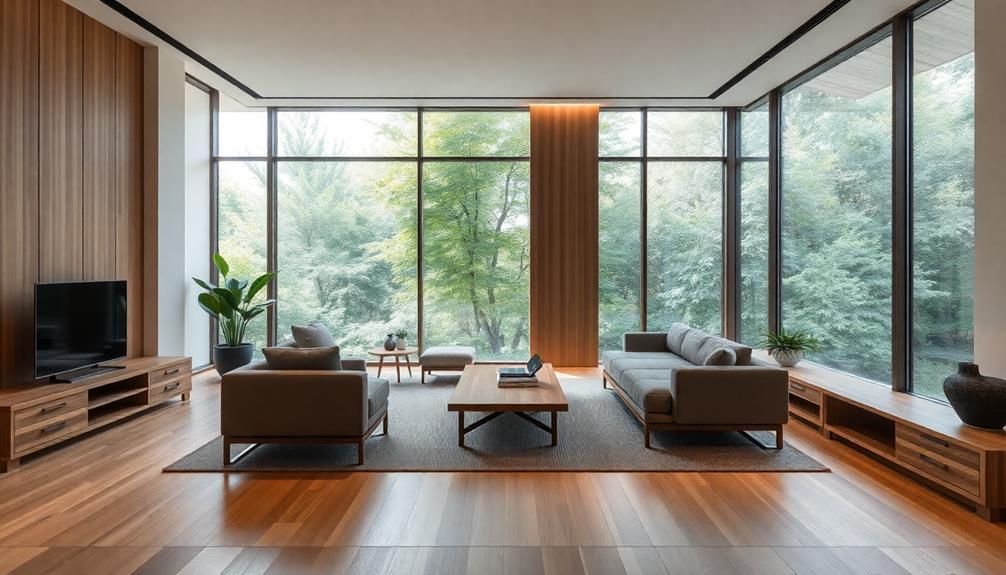
As you incorporate sustainable practices into your design, the future of smart living spaces emerges as an exciting avenue to explore.
Imagine a home that not only looks serene but also adapts to your lifestyle, enhancing both security and comfort. Here are three trends shaping this future:
1. Smart Furniture: Pieces that adjust to your needs, like desks that convert for sitting or standing, enhance comfort and productivity.
The integration of security systems can complement smart furniture, ensuring a safe and functional environment.
2. Eco-Friendly Materials: Use of sustainable resources, like reclaimed wood and bamboo, minimizes environmental impact while maintaining elegance.
Incorporating home security systems can further protect these investments.
3. Automation: Integrating smart home devices allows for effortless control of lighting, temperature, and security, creating an efficient and tranquil environment.
Embracing these elements can help you create a harmonious space that reflects both modern technology and traditional Japanese design principles.
Frequently Asked Questions
How Does Japanese Design Influence Modern Architecture Worldwide?
Japanese design influences modern architecture worldwide by promoting simplicity and harmony. You'll notice clean lines, natural materials, and a focus on space, which encourages tranquility and a deeper connection to the environment in contemporary buildings.
What Role Do Colors Play in Japanese Interior Design?
Imagine walking through a serene forest; colors in Japanese interior design evoke this tranquility. Soft, neutral hues create harmony, while subtle contrasts enhance balance, making your space feel calm and connected to nature.
Are There Specific Japanese Design Styles for Different Rooms?
Yes, you can find specific Japanese design styles for different rooms. For instance, use tatami in bedrooms for tranquility, shoji screens in living areas for flexibility, and a zen garden in outdoor spaces for serenity and connection to nature.
How Can I Incorporate Japanese Design Principles Into My Home?
Imagine a serene retreat, where natural light dances through shoji screens. You can incorporate Japanese design principles by using natural materials, decluttering spaces, and embracing simplicity to create a tranquil, balanced atmosphere in your home. Soft textiles in neutral tones and low-profile furniture further enhance the harmony, inviting a sense of calm to every corner. Whether selecting earthy ceramics or arranging a Zen-inspired rock garden, every choice reflects intentionality and purpose. For additional inspiration, exploring a painter vs. design app comparison can help you decide whether to lean on traditional artistry or modern tools to refine your vision of a peaceful sanctuary.
What Are Some Common Misconceptions About Japanese Minimalism?
Many misunderstand Japanese minimalism, believing it's cold or sparse. In reality, it's about warmth, tranquility, and intentionality. You can create a harmonious space that reflects your personality while embracing simplicity and natural beauty.
Conclusion
As you embrace the art of Japanese design, think of your space as a serene garden. Just like a carefully pruned bonsai, each element should invite calm and simplicity, allowing your mind to breathe. Studies show that living in clutter-free environments can boost creativity and reduce stress. So, as you blend natural materials with modern innovations, remember: creating a haven of tranquility isn't just about aesthetics; it's about nurturing your soul in a fast-paced world.
